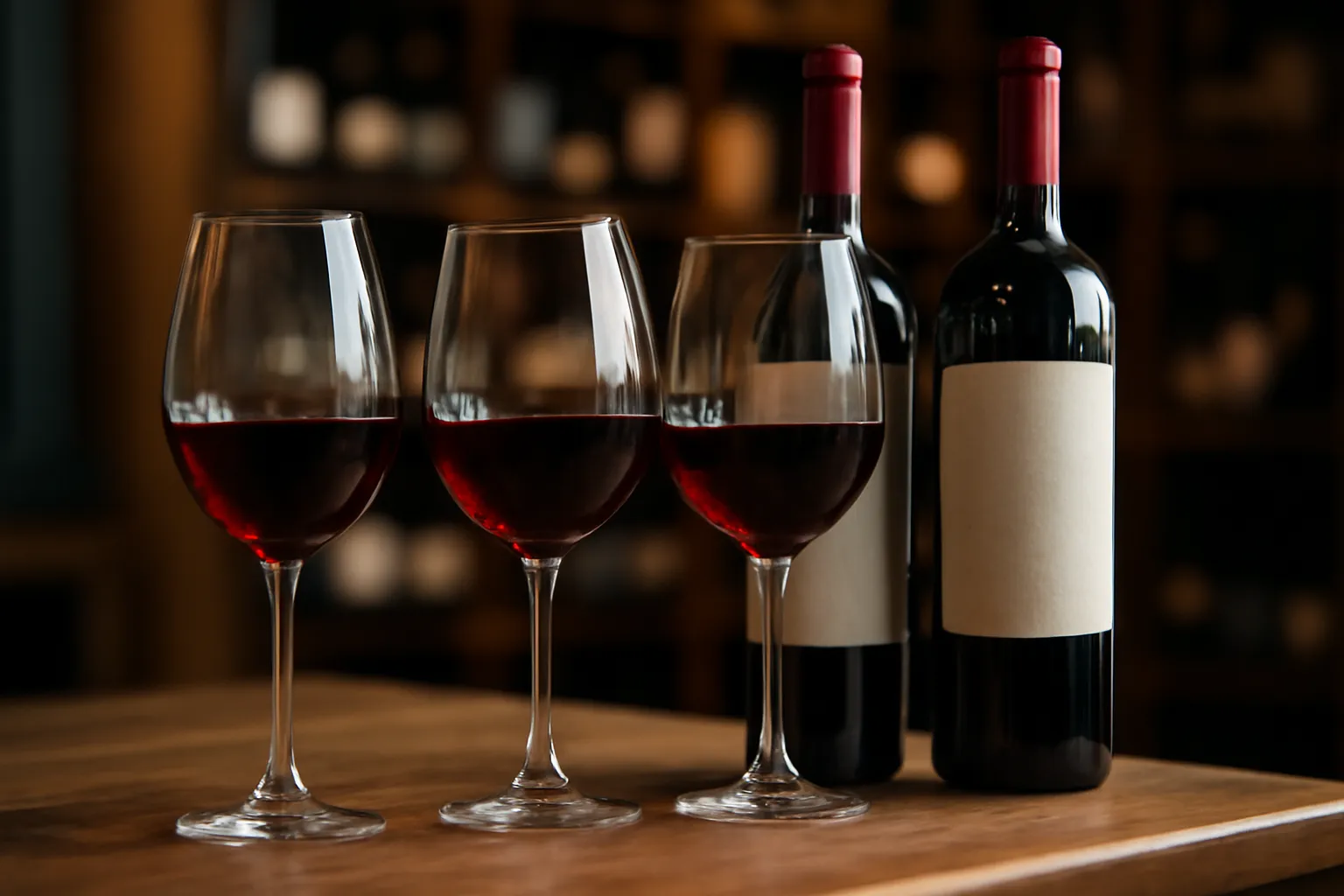Ever find yourself staring at a shelf full of red wines, unsure where to begin? Want to understand how to properly enjoy red wine and pick the best bottle for the occasion? Discover the simple art of selecting and savoring red wine from an expert perspective you can trust.
Choose red wine
Choosing red wine can feel overwhelming, especially with so many varieties and labels on the market. But the truth is, anyone can learn how to pick the right bottle with a bit of insight into grape types, regions, and your personal taste preferences. I’ve spent the last 12 years as a sommelier consultant helping both wine novices and connoisseurs navigate wine selections for events, pairings, and personal collections.
Let’s begin with the basics — the grape varietals. Cabernet Sauvignon, Merlot, Pinot Noir, Syrah/Shiraz, and Malbec are among the most popular. Each one offers distinct flavors and intensities:
-
Cabernet Sauvignon Bold, full-bodied, and often aged in oak, giving it a rich tannic structure.
-
Merlot Softer and fruitier, a great starting point for new red wine drinkers.
-
Pinot Noir Light-bodied and elegant, excellent for delicate dishes.
-
Syrah/Shiraz Spicy and robust, often with notes of black pepper and blackberry.
-
Malbec Dark and juicy, with plum and mocha undertones.
Beyond grape types, wine regions also play a critical role. French wines are typically more earthy and restrained, while New World wines (like those from California, Chile, or Australia) lean toward ripe fruit flavors and fuller bodies. I always recommend exploring wines from lesser-known regions such as Argentina’s Mendoza or Spain’s Rioja — often more affordable and surprisingly high in quality.
Also consider the occasion. For a cozy dinner, a bold wine like a Cabernet is ideal. For light conversation and appetizers, a Pinot Noir or Beaujolais does the trick. And if you’re gifting, opt for a wine with a beautiful label and a story — something from a family-run vineyard or sustainable winery always makes an impression.
Wine Tip Always read the back label — it often tells you about flavor notes and what foods it pairs best with.
To make the right pick easier, keep a simple checklist:
-
Know your budget.
-
Identify the main dish or event.
-
Choose a grape variety you’re curious about.
-
Decide between Old World and New World styles.
-
Don’t hesitate to ask for help from the wine shop staff.
Want to refine your wine-picking instincts?
👉”Best Red Wines by Occasion”👈
How to drink red wine
Drinking red wine isn’t just about sipping — it’s a full sensory experience. To truly appreciate a red wine, you need to consider temperature, glassware, breathing time, and pairing.
Many people drink red wine too warm. The ideal temperature is 14–18°C (57–64°F) — cooler than typical room temperature. This preserves the wine’s balance and prevents it from tasting overly alcoholic. I once hosted a tasting where we compared room-temp and slightly chilled red wine — guests were shocked at the difference.
Glass shape also matters. Use a larger bowl-shaped glass to allow the wine to “open up,” letting aromas develop as you swirl it. The wider surface area improves aeration — which brings us to the next tip: let the wine breathe. Full-bodied reds like Cabernet and Syrah benefit from decanting for 30–60 minutes. Even swirling in the glass can unlock hidden layers of aroma.
Now, what about tasting technique? Use the four S’s:
-
See – Observe the wine’s color and clarity.
-
Swirl – Release the aromas.
-
Smell – Inhale deeply and note the bouquet.
-
Sip – Let it roll on your tongue to sense all flavor zones.
And don’t forget food. Red wines and meals should complement each other.
-
Light reds (like Pinot Noir) pair well with salmon or mushroom dishes.
-
Medium reds (like Merlot) go great with roast chicken or pasta.
-
Bold reds (like Malbec or Shiraz) shine with grilled meats or rich stews.
When I prepared a holiday menu for a corporate event, pairing a rustic Syrah with spiced lamb brought out the wine’s peppery undertones perfectly — a big hit with guests.
Want to elevate your red wine tasting to a pro level?
👉”Red Wine Drinking Techniques”👈
How to choose red wine
Though this overlaps with the first section, let’s now look at advanced ways to choose wine based on season, vintage, and aging potential — keys to mastering your red wine journey.
Seasonal selection makes a big difference. In colder months, bold and structured wines like Barolo, Bordeaux blends, or Syrah warm the body and match heavier foods. During spring or summer, choose lighter reds like Gamay or chilled Grenache — refreshing and vibrant.
Next, vintage (the year the grapes were harvested) affects taste. A cooler year often means higher acidity and leaner flavors, while warmer vintages give bolder, fruitier notes. I remember comparing a 2016 and 2018 Rioja at a tasting in Spain — the 2016 was more refined and complex, perfect for aging.
Speaking of aging — if you’re building a home collection, consider wines that improve over time:
-
Bordeaux, Barolo, and Brunello age well for 10–20 years.
-
California Cabernets and high-end Australian Shiraz also have great longevity.
Look for terms like “Reserva” or “Grand Cru” on the label — these often indicate extended aging and higher quality. But don’t be misled by fancy bottles. I once discovered a stunning Portuguese red blend under $15 that outperformed wines three times its price — proof that great wine doesn’t have to be expensive.
Checklist for advanced wine buyers
-
Match wine to season or event.
-
Check vintage for weather patterns.
-
Learn about the producer’s reputation.
-
Read online reviews or tasting notes.
-
Trust your own palate through experimentation.
Want to become a confident red wine shopper who always picks a winner?
👉”Find the Perfect Red Wine for You”👈
Conclusion
Choosing and enjoying red wine is not a skill reserved for sommeliers — it’s a journey anyone can begin with curiosity and a bit of knowledge. From understanding grape types and regional styles to mastering tasting techniques and recognizing seasonal cues, every sip offers a new discovery.
As Ernest Hemingway once said, “Wine is the most civilized thing in the world.” So the next time you uncork a bottle, take a moment to appreciate the story it tells — from vineyard to glass.
Whether you’re selecting a wine for dinner or learning how to appreciate its layers, trust your taste, explore widely, and most of all — enjoy the experience.






